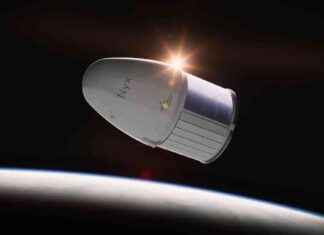Fishing for stocked trout throughout the Willamette Valley faces an uncertain future as the U.S. Army Corps of Engineers considers privatizing hatcheries at the heart of stocking programs in the state’s most heavily populated region. Bill Monroe
The Willamette Valley’s popular hatchery trout programs are on the block, facing severe cutbacks and an ownership change.
Oregon fish managers recoiled this past week as the U.S. Army Corps of Engineers announced plans to put the mega-fish hatchery at Bonneville Dam and several other key hatcheries on the Willamette and Rogue river systems out for competitive bid, moving away from a 65-year relationship with the Oregon Department of Fish and Wildlife.
Privatization will result in substantial reductions in stocked trout throughout the Willamette Valley and, as planned now, will end trout stocking in Detroit and Foster reservoirs, among others.
The Corps said it will soon start taking bids for operating Bonneville, Cole Rivers (Rogue system), trout production and fish health and marking services. The Oregon Department of Fish and Wildlife will assume control of Marion Forks, South Santiam, McKenzie and Willamette hatcheries for salmon and steelhead programs.
A stunned Oregon Department of Fish and Wildlife said it will bid on Bonneville Hatchery, at the hub of numerous programs, including substantial salmon production. It will also bid on Cole Rivers, the Rogue River’s major hatchery salmon source.
Private companies also are looking at bids, however, creating numerous un-answered legal questions about who will own returning hatchery salmon.
An in-house department assessment Thursday said the corps plan will likely end trout stocking in Detroit, Foster, Cougar and Middle Fork Willamette reservoirs and, possibly, the McKenzie River. The Corps said it won’t stock trout where plans are in the works to return salmon and steelhead runs above reservoirs – even though those plans are years away.
The Corps will seek bids from private fish hatcheries for the valley’s trout needs, but the announcement suggests there won’t be nearly as many as have been stocked in the past in Willamette Valley ponds and lakes during spring, summer and early fall. Those trout have been grown at the hatcheries the Corps is abandoning.
The Corps, according to the department assessment, plans to contract for up to 150,000 (or less) pounds of trout, just 54 percent of its mitigation responsibility for 277,000 pounds.
Also at risk are hatchery summer steelhead programs on the Sandy and Clackamas rivers, since smolt production begins in the valley hatcheries being turned over to the cash-strapped fish and wildlife agency.
The future of Willamette River hatchery spring chinook plants is uncertain as well, since those smolts also are produced in Corps’ hatcheries.
Leaburg Hatchery, which produces most of the valley’s stocked trout, will probably be closed, the department said.
Off-guard Oregon officials were largely mum, but said the department’s director, Curt Melcher, has scheduled a meeting with Corps of Engineers managers.
Sturgeon ups and downs: Legal-sized sturgeon numbers are up again in the lower Columbia River, but Oregon and Washington appear unlikely to approve any sturgeon retention in 2017.
There are nearly a quarter million keeper-sized sturgeon in the lower river, an increase annually since retention closed in 2014.
However, biologists told the Oregon Fish and Wildlife Commission Friday in Tigard they’re still worried about low numbers of young sturgeon in the river and a low, static number of large spawning fish.
Ideally, the total number of sturgeon in the river would be 95 percent undersized in a range of age-classes, but the figure was closer to 60 percent in 2016.
The lack of recruitment (new young fish) suggests significant production problems.
Catch-and-release fishing will continue and there is a limited retention fishery underway upriver from Bonneville Dam.
Coho: Coho salmon forecasts are close to the same for 2017 as last year, with a slight improvement on the Columbia River, but about the same number of coastal hatchery fish and a dip in coastal wild coho.
The Columbia River prediction is 386,300 fish, up a bit from 380,600 predicted last year. That prediction, however, compared with an actual return of just 223,100.
Coast hatchery coho are predicted at 394,300, compared with 396,500 predicted in 2016 – a run that came in at just 233,800.
Coast wild coho are predicted at 101,900, compared with 152,700 last year – twice the actual return of 83,200.
Coho are extremely cyclical and can return at much higher numbers than predicted.
In memoriam: Carmen Macdonald, a sportfishing marketing guru and long-time respected voice for sport anglers, died recently.
Macdonald was respected on the water and throughout the sportfishing industry for his integrity, commitment, good nature and willingness to share secrets, lures and stories.
His life will be celebrated at 7 p.m. Monday in Athey Creek Christian Fellowship, 2700 SW Ek Road.
— Bill Monroe
Our editors found this article on this site using Google and regenerated it for our readers.





